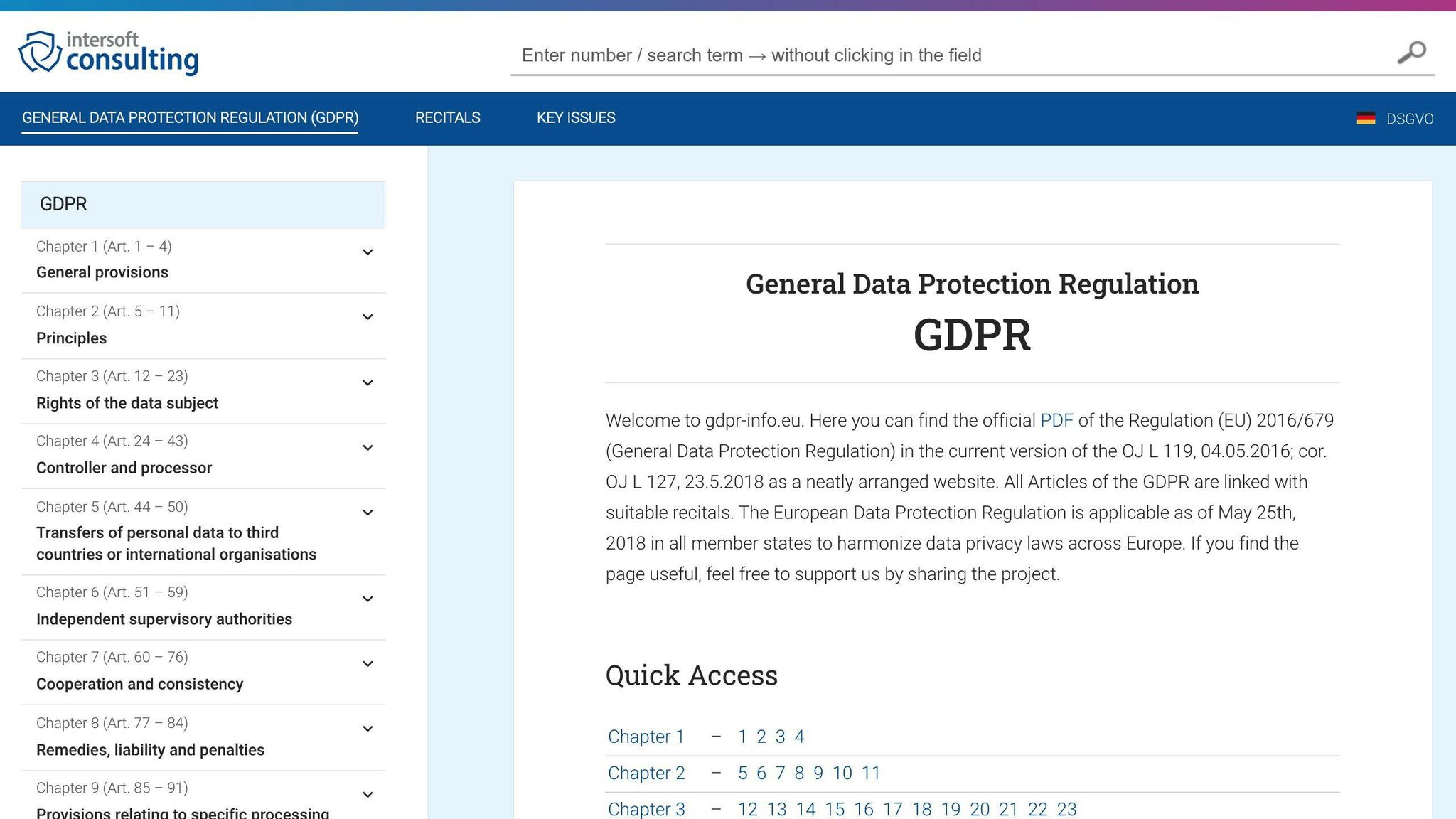Discover 9 essential practices to enhance chatbot data privacy and ensure GDPR compliance.
Ensure your chatbot aligns with privacy laws and fosters trust with secure, legally compliant data handling practices.
Protect user data and stay GDPR compliant with your chatbot:
- Get clear consent
- Collect minimal data
- Give users control
- Use strong security
- Vet third-parties
- Set data retention limits
- Handle sensitive data carefully
- Have a breach plan
- Audit compliance regularly
Key GDPR requirements for chatbots:
| Requirement | Meaning |
|---|---|
| User consent | Ask before collecting |
| Data minimization | Gather only what’s needed |
| User control | Allow access/deletion |
| Security | Encrypt and protect |
| Breach notification | Report within 72 hours |
| Retention limits | Don’t keep data forever |
Follow these to build trust and avoid fines. It’s about respecting users, not just following rules.
Related video from YouTube
1. Get user permission and be clear
Here’s how to do it right:
Show clear privacy notices
Present privacy info upfront:
"Hi! I’ll need your name and email to help you. This lets me personalize and follow up. OK?"
Make privacy policy accessible
Add a clear "View Privacy Policy" link or command.
Explain data collection reasons
Be specific about why you gather info:
"We use your location for store recommendations. We don’t share it and delete it after 30 days."
2. Collect less data
Here’s how to minimize data collection:
Only collect needed info
Focus on essentials:
- Use first name only
- Collect email only if needed
- Avoid asking for sensitive data
Use data as intended
Stick to stated purposes:
| Data | Intended Use | Prohibited Use |
|---|---|---|
| Order confirmations | Marketing | |
| Location | Store recommendations | Selling to advertisers |
| Chat history | Improve responses | User profiling |
Check data practices often
Do regular audits:
- Quarterly data type reviews
- Annual usage assessments
- Monitor user feedback
3. Let users control their data
Give users data control:
Allow data access
Add a "View My Data" option showing collected info.
Enable data deletion
Include a "Delete My Data" button with automated processing.
Make data portable
Help users transfer data:
- Offer "Download My Data"
- Use common formats (JSON, XML, CSV)
- Use secure transfer methods
- Provide clear instructions
4. Keep data safe
Protect user data:
Use strong encryption
Encrypt all data:
Store data securely
Use:
- Encrypted databases
- Role-based access controls
- Secure, encrypted backups
Check security regularly
Do weekly audits and vulnerability tests.
5. Check outside services
Manage third-party risks:
Vet services before use
Review:
- Privacy policies
- Security practices
- GDPR compliance
- Past incidents
Use APIs safely
- Secure API key management
- Implement rate limiting
- Encrypt all API data
Make clear agreements
Use Data Processing Agreements (DPAs) outlining:
- Data protection responsibilities
- GDPR compliance clauses
- Right to conduct audits
sbb-itb-58cc2bf
6. Decide how long to keep data
Set clear retention policies:
Set time limits
Example retention periods:
| Data Type | Period | Reason |
|---|---|---|
| Chat logs | 30 days | Troubleshooting |
| User accounts | 1 year after last login | User convenience |
| Payment info | 7 years | Legal requirement |
Delete old data automatically
Use:
- Database triggers
- Nightly purge scripts
- Data lifecycle tools
Review data regularly
Ask:
- Is it still useful?
- Are we legally required to keep it?
- Does it pose unnecessary risks?
7. Handle sensitive data carefully
Take extra care with sensitive info:
Identify sensitive data
GDPR-defined sensitive data includes:
- Race/ethnicity
- Political opinions
- Religious beliefs
- Health info
- Sexual orientation
- Biometric data
Assess risks
Perform Data Protection Impact Assessments (DPIAs).
Add extra protection
Implement:
- Strict access controls
- Strong encryption
- Data pseudonymization
- Regular security audits
8. Plan for data breaches
Be prepared:
Create a response plan
Outline:
- Responsibilities
- Containment steps
- Notification procedures
Know how to notify
Prepare:
- Notification templates
- Contact lists
- Information sharing guidelines
Practice your plan
Run regular breach simulations and update your plan.
9. Keep checking compliance
Stay vigilant:
Have a data protection expert
Consider appointing a Data Protection Officer (DPO).
Audit regularly
Review:
- Data collection practices
- Consent mechanisms
- Security measures
- Third-party agreements
Stay updated on GDPR

Follow data protection news and attend industry events.
Conclusion
Strong data privacy builds trust and protects users. By following these practices, you can:
- Meet GDPR compliance requirements
- Reduce breach risks
- Boost user confidence
Remember:
- Get clear consent
- Collect only necessary data
- Give users control
- Keep security up-to-date
Prioritizing data protection sets you apart and shows users you value their privacy.
FAQs
Are chatbots GDPR compliant?
Chatbots can be GDPR compliant if they:
- Get clear consent
- Explain data collection reasons
- Allow user data access/deletion
- Keep data secure
What are chatbot security measures?
Key measures include:
| Measure | Description |
|---|---|
| Encryption | HTTPS, SSL/TLS, AES-256 |
| Access Control | Role-based access, multi-factor auth |
| Regular Testing | Security audits, penetration tests |
| Data Minimization | Collect only necessary info |
| User Control | Allow data management |
Keep these updated and follow industry standards like SOC 2 and ISO 27001.




